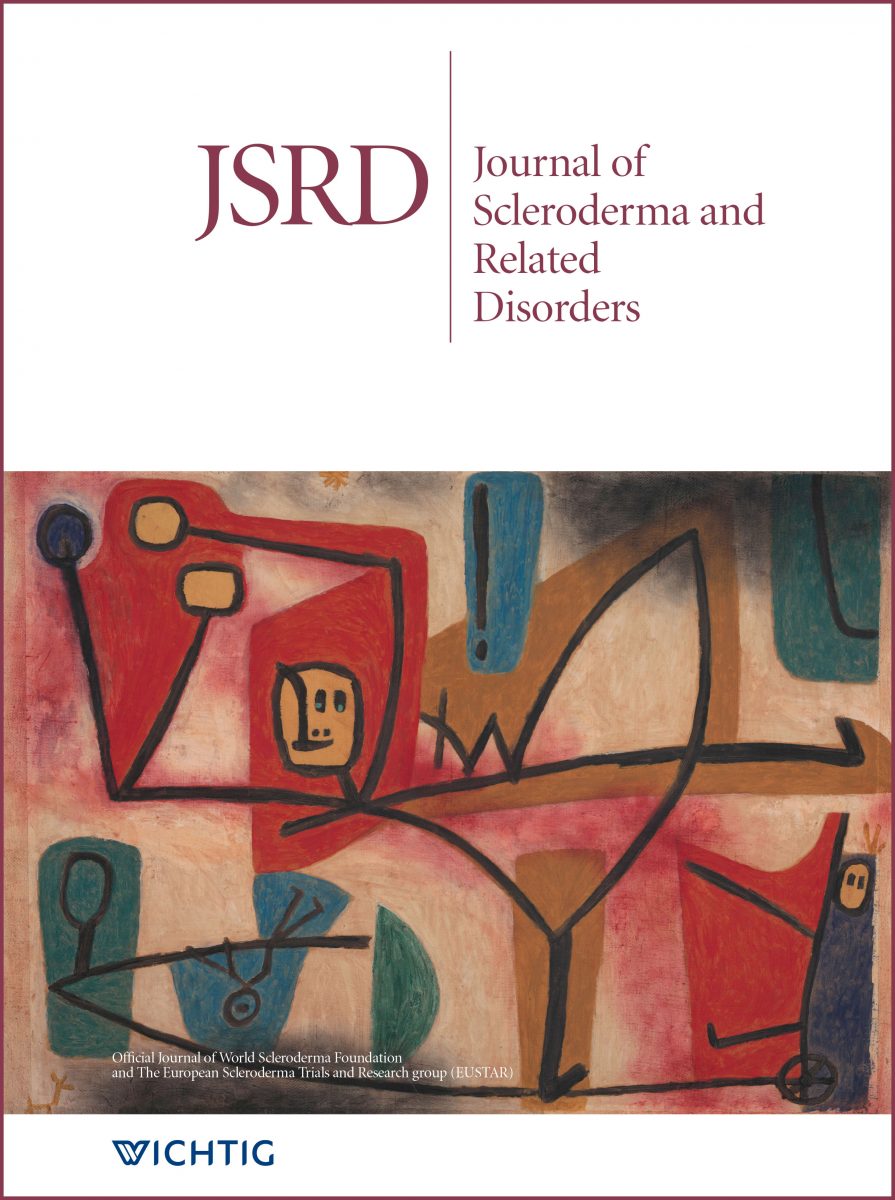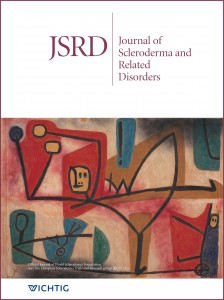Journal of Scleroderma and Related Disorders Publishes First Volume

JOURNAL OF SCLERODERMA AND RELATED DISORDERS (JSRD) Volume 1
The official journal of THE WORLD SCLERODERMA FOUNDATION and THE EUROPEAN SCLERODERMA TRIALS AND RESEARCH GROUP (EUSTAR)
‘INTRODUCING THE JOURNAL OF SCLERODERMA and RELATED DISORDERS, a challenge for the future of our community’
This is the Editorial headline in the first edition of JSRD, headed by the Editors in Chief, Marco Matucci-Cerinic (University of Florence, Italy) and Masataka Kuwana (Nippon Medical School Graduate School of Medicine, Japan).
A synopsis of the editorial article reads:
“Systemic sclerosis (Ssc) or scleroderma remains the disease associated with the great burden of morbidity and mortality, even though a prominent paradigm shift in treatment strategies has changed clinical practice of many rheumatic diseases. Despite a series of clinical and basic researches, the pathophysiology of Ssc has not been fully clarified, and effective disease-modifying therapies are still lacking.
However, we strongly believe that the outlook for Ssc and related disorders is now changing rapidly. During the past decade, a variety of new molecules, pathways, and cell types have been identified as critical players in the diverse manifestations of Ssc. Much of this research has been made possible by the application of gene expression profiling, genomics, and proteomics with powerful analytic platforms, such as microchip array techniques.
The importance of the epigenetic control in the pathogenic mechanisms reflects the interplay of environment with the genome. These cutting-edge strategies make it possible to identify and validate novel biomarkers, and to develop precise therapeutic targets…….
These enormous efforts significantly enhance bench-to-bedside research interplay, and basic discoveries are promptly translated into clinical trials at an increasingly rapid pace. This positive feedback attracts the pharmaceutical industry for developing novel treatment strategies, and, in fact, many clinical trials on potential disease-modifying treatments for Ssc are ongoing globally……’
‘In this era of reform, the Journal of Scleroderma and Related Disorders (JSRD) has been started as an international, multi-disciplinary, peer-reviewed journal, targeting scientists and clinicians interested in Ssc and other related autoimmune and fibrotic diseases. JSRD is the official journal of the European Scleroderma Trials and Research group (EUSTAR) and the World Scleroderma Foundation, which supports Ssc research in all its aspects and is committed to improving the quality of life for Ssc patients and their families.
The commemorative first issue is published in February 2016 to coincide with the 4th Systemic Sclerosis World Congress. The 1st Systemic Sclerosis World Congress was successfully held in 2010 in Florence, Italy. Since then, this congress has become the primary platform for exchange of scientific and clinical information through an interaction between practicing or training physicians, scientists, health professionals, patients, and representatives of the pharmaceutical industry throughout the world. The number of abstracts has increased considerably during recent years, with 455 submitted abstracts for the 4th Systemic Sclerosis World Congress, which reflects the enthusiasm and dedication of the Ssc community.”
The Editorial Board is composed of the following:
2 Editors in Chief, 4 Senior Editors, 5 Honorary Editors, 8 Associate Editors, 10 Assistant Editors, 73 Editorial Board members.
The Journal is scheduled to be published three times a year.
The Contents page for Volume 1 Number 1 January – April 2016 (the first edition), looks like this:
Editorials:
Introducing the JSRD, a challenge for the future of our community, Masataka Kuwana, Marco Matucci-Cerinic
“United we win”, communication is the key for a better future in scleroderma, Frank A. Wollheim
Paul Klee: the painter and the contribution of the most famous scleroderma patient to art in the 20th century, Alexander Klee
Progress and priorities in systemic sclerosis: the next 10 years — report from the World Scleroderma Foundation
Review:
Esophageal surgeries in systemic sclerosis (Ssc) — a systematic review of the literature, Yossra Suliman, Sachin Srinivasas, Mary S Maish, Lisa M. Federer, Daniel E. Furst
Congress Report:
Reports from the 2015 American College of Rheumatology congress, Jerome Avouac, Michal Tomcik, Christian Beyer
14 Oral Presentations; 12 posters
As a special introductory price The JSRD is currently FREE until 31st May 2016.
To view the website and sign up for your free copy click here
To access the latest Advance Online Publications click here
The articles included in the Advance Online Publications section have been peer reviewed and accepted by the JSRD and are published online after author approval. There are currently 4 titles listed and available for free until May 31st:
- A randomised controlled trial of acupressure for the treatment of Raynaud’s phenomenon: the difficulty of conducting a trial in Raynuad’s phenomenon
- Mycophenolate mofetil following cyclophosphamide in worsening systemic sclerosis-associated interstitial lung disease
- Effect of endothelin-1 receptor antagonists on skin fibrosis in scleroderma patients from the EUSTAR database
- Systemic sclerosis trial design moving forward
I would urge every patient to take advantage of this special introductory free offer, and even if you cannot understand all of the contents, the contents provide huge assurance to the global Ssc community that the world leading experts in Ssc are collaborating with each other, for best practice Ssc patient care across the entire Ssc global landscape.
And, fear not, as I hope to translate some of the article into patient language, in future blog posts! Please let me know if there is any topic in particular, which you would like to be included.
United, globally, together, we will crack the Ssc code.
To find out more about more about the worldwide effort to raise awareness of Scleroderma and support research to treat and eventually cure the disease, be sure to read my post entitled “Why Global Collaboration Is So Important to Systemic Sclerosis Patients” that profiles the work of the World Scleroderma Foundation.







